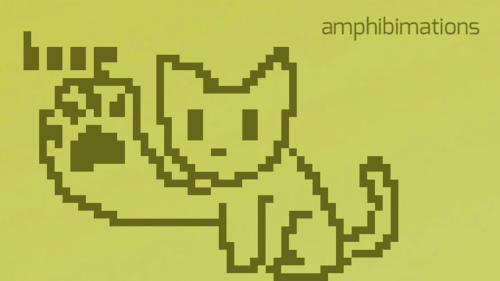This Is Very Beautiful.
This is very beautiful.

Really awesome article, recommend reading the whole thing
"Drive by the multimillion-dollar homes, pools and golf courses of the renowned New York escape, Southampton, and you would scarcely know there is an Indigenous population there. But the Shinnecock have been on Long Island for the last 13,000 years, or as the Shinnecock will tell you, 400 generations.
They are one of New York’s oldest self-governing tribes, and about half of the tribal members live on the 900-acre peninsular reservation. Traditionally, the Shinnecock were a mariner tribe, and their history as expert fishermen, hunters, farmers and whalers has proven critical in the absence of other economic opportunities. Today, however, the tribe faces constant ecological threats.

The more immediate threat is to the marine life that the nation has depended on to sustain them.
“For generations, we were taught how to live off the land, or how to fish for what we need, but it’s just not possible any more because the nitrogen levels in the sea,” said Troge. “It’s killing all of the fish and the shellfish that have sustained us.”"
...
“It really amazed me that so many of the sisters joined us,” said Troge, “They were so respectful.”
When Genia contacted the monastery to discuss collaborating with the kelp farm, Sister Joan was quickly on board.
“How can we deny them that?” she says, “The bay has their name!”
The sisters offered a cottage at their retreat center to serve as a hatchery. When the question of finances came up, Sister Joan was clear: anything profits made from the kelp farm belonged to the Shinnecock. “We’re here to support you and to affirm you,” she said.
Within a couple of months, the cottage was transformed with fish tanks and warming lights. In 2021, the Shinnecock Kelp Farm was launched, and to date, 20 lines of kelp have been planted in the bay. The sisters help check the kelp lines or watching Troge’s one-year-old son when she visits. During the pandemic, they offered a “kind words program”, where sisters sang and recited poetry to the seedlings; now, they’re making it a regular practice.
Success
In the last two farming seasons, Troge has seen an increase in scallops, clams, sea horses, and other species she hasn’t seen in years, sheltering in their kelp lines. “We expanded our hatchery 10 times this season,” said Hopson Begun. In addition to their original farming site, they have since added two more at opposite ends of the bay. They hope, in time, to expand their farm sites deeper into the bay and ocean, and are currently working to secure the boats they would need to do so.
...
As a community in the throes of adversity, the outlook for future generations of tribal members may seem unpromising. But the Shinnecock are placing their trust in the same foundational values that have sustained them for 13,000 years.
“As Shinnecock we are taught to preserve our life for the next seven generations,” said Tela, “It’s what drives us to take action to protect the water now.”
More Posts from Thekingsbutler and Others
Honestly.
When people like my silly lil collages I'm like, !?!?!?!
If u interact with my posts, just know I respond like this:

The problem with adults is that they don't have sleepovers where they transition between fun movie and snack time to psychoanalyzing themselves in the safety of the others

hot artists don't gatekeep
I've been resource gathering for YEARS so now I am going to share my dragons hoard
Floorplanner. Design and furnish a house for you to use for having a consistent background in your comic or anything! Free, you need an account, easy to use, and you can save multiple houses.
Comparing Heights. Input the heights of characters to see what the different is between them. Great for keeping consistency. Free.
Magma. Draw online with friends in real time. Great for practice or hanging out. Free, paid plan available, account preferred.
Smithsonian Open Access. Loads of free images. Free.
SketchDaily. Lots of pose references, massive library, is set on a timer so you can practice quick figure drawing. Free.
SculptGL. A sculpting tool which I am yet to master, but you should be able to make whatever 3d object you like with it. free.
Pexels. Free stock images. And the search engine is actually pretty good at pulling up what you want.
Figurosity. Great pose references, diverse body types, lots of "how to draw" videos directly on the site, the models are 3d and you can rotate the angle, but you can't make custom poses or edit body proportions. Free, account option, paid plans available.
Line of Action. More drawing references, this one also has a focus on expressions, hands/feet, animals, landscapes. Free.
Animal Photo. You pose a 3d skull model and select an animal species, and they give you a bunch of photo references for that animal at that angle. Super handy. Free.
Height Weight Chart. You ever see an OC listed as having a certain weight but then they look Wildly different than the number suggests? Well here's a site to avoid that! It shows real people at different weights and heights to give you a better idea of what these abstract numbers all look like. Free to use.
like black people are present in every single fucking genre and scene and popularized and straight up created several but people are so fucking hell bent on finding every possible excuse to not engage with their music because its easier than trying to confront their own racism. like okay well if its truly just a disinterest in most rap music then surely you listen to black artists in other genres right? who am i fucking kidding. of course you dont.


Inherited Silver
A collage for Quinn from the Webtoon Wolfsbane!

A boop cat to live on your blog!!!!!

Seeing the Invisible Universe

This computer-simulated image shows a supermassive black hole at the core of a galaxy. The black region in the center represents the black hole’s event horizon, beyond which no light can escape the massive object’s gravitational grip. The black hole’s powerful gravity distorts space around it like a funhouse mirror. Light from background stars is stretched and smeared as it skims by the black hole. You might wonder — if this Tumblr post is about invisible things, what’s with all the pictures? Even though we can’t see these things with our eyes or even our telescopes, we can still learn about them by studying how they affect their surroundings. Then, we can use what we know to make visualizations that represent our understanding.
When you think of the invisible, you might first picture something fantastical like a magic Ring or Wonder Woman’s airplane, but invisible things surround us every day. Read on to learn about seven of our favorite invisible things in the universe!
1. Black Holes

This animation illustrates what happens when an unlucky star strays too close to a monster black hole. Gravitational forces create intense tides that break the star apart into a stream of gas. The trailing part of the stream escapes the system, while the leading part swings back around, surrounding the black hole with a disk of debris. A powerful jet can also form. This cataclysmic phenomenon is called a tidal disruption event.
You know ‘em, and we love ‘em. Black holes are balls of matter packed so tight that their gravity allows nothing — not even light — to escape. Most black holes form when heavy stars collapse under their own weight, crushing their mass to a theoretical singular point of infinite density.
Although they don’t reflect or emit light, we know black holes exist because they influence the environment around them — like tugging on star orbits. Black holes distort space-time, warping the path light travels through, so scientists can also identify black holes by noticing tiny changes in star brightness or position.
2. Dark Matter

A simulation of dark matter forming large-scale structure due to gravity.
What do you call something that doesn’t interact with light, has a gravitational pull, and outnumbers all the visible stuff in the universe by five times? Scientists went with “dark matter,” and they think it's the backbone of our universe’s large-scale structure. We don’t know what dark matter is — we just know it's nothing we already understand.
We know about dark matter because of its gravitational effects on galaxies and galaxy clusters — observations of how they move tell us there must be something there that we can’t see. Like black holes, we can also see light bend as dark matter’s mass warps space-time.
3. Dark Energy

Animation showing a graph of the universe’s expansion over time. While cosmic expansion slowed following the end of inflation, it began picking up the pace around 5 billion years ago. Scientists still aren’t sure why.
No one knows what dark energy is either — just that it’s pushing our universe to expand faster and faster. Some potential theories include an ever-present energy, a defect in the universe’s fabric, or a flaw in our understanding of gravity.
Scientists previously thought that all the universe’s mass would gravitationally attract, slowing its expansion over time. But when they noticed distant galaxies moving away from us faster than expected, researchers knew something was beating gravity on cosmic scales. After further investigation, scientists found traces of dark energy’s influence everywhere — from large-scale structure to the background radiation that permeates the universe.
4. Gravitational Waves

Two black holes orbit each other and generate space-time ripples called gravitational waves in this animation.
Like the ripples in a pond, the most extreme events in the universe — such as black hole mergers — send waves through the fabric of space-time. All moving masses can create gravitational waves, but they are usually so small and weak that we can only detect those caused by massive collisions. Even then they only cause infinitesimal changes in space-time by the time they reach us. Scientists use lasers, like the ground-based LIGO (Laser Interferometer Gravitational-Wave Observatory) to detect this precise change. They also watch pulsar timing, like cosmic clocks, to catch tiny timing differences caused by gravitational waves.
This animation shows gamma rays (magenta), the most energetic form of light, and elusive particles called neutrinos (gray) formed in the jet of an active galaxy far, far away. The emission traveled for about 4 billion years before reaching Earth. On Sept. 22, 2017, the IceCube Neutrino Observatory at the South Pole detected the arrival of a single high-energy neutrino. NASA’s Fermi Gamma-ray Space Telescope showed that the source was a black-hole-powered galaxy named TXS 0506+056, which at the time of the detection was producing the strongest gamma-ray activity Fermi had seen from it in a decade of observations.
5. Neutrinos

This animation shows gamma rays (magenta), the most energetic form of light, and elusive particles called neutrinos (gray) formed in the jet of an active galaxy far, far away. The emission traveled for about 4 billion years before reaching Earth. On Sept. 22, 2017, the IceCube Neutrino Observatory at the South Pole detected the arrival of a single high-energy neutrino. NASA’s Fermi Gamma-ray Space Telescope showed that the source was a black-hole-powered galaxy named TXS 0506+056, which at the time of the detection was producing the strongest gamma-ray activity Fermi had seen from it in a decade of observations.
Because only gravity and the weak force affect neutrinos, they don’t easily interact with other matter — hundreds of trillions of these tiny, uncharged particles pass through you every second! Neutrinos come from unstable atom decay all around us, from nuclear reactions in the Sun to exploding stars, black holes, and even bananas.
Scientists theoretically predicted neutrinos, but we know they actually exist because, like black holes, they sometimes influence their surroundings. The National Science Foundation’s IceCube Neutrino Observatory detects when neutrinos interact with other subatomic particles in ice via the weak force.
6. Cosmic Rays

This animation illustrates cosmic ray particles striking Earth's atmosphere and creating showers of particles.
Every day, trillions of cosmic rays pelt Earth’s atmosphere, careening in at nearly light-speed — mostly from outside our solar system. Magnetic fields knock these tiny charged particles around space until we can hardly tell where they came from, but we think high energy events like supernovae can accelerate them. Earth’s atmosphere and magnetic field protect us from cosmic rays, meaning few actually make it to the ground.
Though we don’t see the cosmic rays that make it to the ground, they tamper with equipment, showing up as radiation or as “bright” dots that come and go between pictures on some digital cameras. Cosmic rays can harm astronauts in space, so there are plenty of precautions to protect and monitor them.
7. (Most) Electromagnetic Radiation

The electromagnetic spectrum is the name we use when we talk about different types of light as a group. The parts of the electromagnetic spectrum, arranged from highest to lowest energy are: gamma rays, X-rays, ultraviolet light, visible light, infrared light, microwaves, and radio waves. All the parts of the electromagnetic spectrum are the same thing — radiation. Radiation is made up of a stream of photons — particles without mass that move in a wave pattern all at the same speed, the speed of light. Each photon contains a certain amount of energy.
The light that we see is a small slice of the electromagnetic spectrum, which spans many wavelengths. We frequently use different wavelengths of light — from radios to airport security scanners and telescopes.
Visible light makes it possible for many of us to perceive the universe every day, but this range of light is just 0.0035 percent of the entire spectrum. With this in mind, it seems that we live in a universe that’s more invisible than not! NASA missions like NASA's Fermi, James Webb, and Nancy Grace Roman space telescopes will continue to uncloak the cosmos and answer some of science’s most mysterious questions.
Make sure to follow us on Tumblr for your regular dose of space!
Brazil's Rio Grande do Sul is currently flooded
I don't make these kinds of posts, but Rio Grande do Sul (a brazilian estate) is going through its worst natural catastrophe in recorded history and I need everyone to know about this. Its currently looking like this:


What is going on
Most of Brazil suffers from yearly floods during the rain season. These floods most of the time aren't bad, with water going away a few hours later. Sometimes they are a nightmare, with people losing their homes and most if not all belongings. But this?


This is not fucking normal.
Currently (May 6th, 2024) there's +80 confirmed deaths and 873 thousand people are being affected by these historical floods. Eight hundred and seventy three THOUSAND people. Once again: THIS. IS. NOT. NORMAL.
Rio Grande has 496 cities, and currently, 364 are reporting problems related to this. It's almost the entirety of Rio Grande - and you know how big Rio Grande is? If you're from the USA, its just a bit bigger than Colorado, and just a bit smaller than Nevada. If you are European, Rio Grande is bigger than the United Kingdom. Can you imagine if almost the entirety of the UK was underwater? Because I sure fucking can just by watching brazilian news!
Rio Grande expects floods. It rains a lot in Brazil. What no one expect is having to deal with 2,30 meters - 7'7 feet for reference - ABOVE the expected flooding level, which is 3 meters (9'10 feet). This means that there were 5,26 meters (17'3 ft) of water. Chart for comparison:

I live in São Paulo, which is completely unaffected by what is going on over there, but I need people to be aware of this. Why?
How YOU can help
A single US dollar is almost five reais. One euro is around 5,50. This may not be much to a lot of people reading this, but literally anything helps. If you donate U$10, it's R$50 for us. If it's euros, then it's R$55,00.
If you can't donate, please just reblog this post.
INTERNATIONAL DONATIONS INFO
If you use euros, here's the donation info:
Standard Chartered Bank Frankfurt Bank
Swift: SCBLDEFX
Bank Account: 007358304
If you use dollars, here's the donation info:
Standard Chartered Bank New York Bank
Swift: SCBLUS33
Bank Account: 3544032986001
You need to inform this in order to donate:
IBAN Code: BR5392702067001000645423206C1
Name: Associação dos Bancos no Estado do Rio Grande do Sul
CNPJ: 92.958.800/0001-38
NATIONAL DONATIONS INFO
If you're brazilian, oi, aqui tá o Pix do canal SOS Rio Grande do Sul para você ajudar:
Pix: CNPJ: 92.958.800/0001-38 Banco do Estado do Rio Grande do Sul ou Associação dos Bancos no Estado do Rio Grande do Sul
-
 thefandomsociologist liked this · 3 weeks ago
thefandomsociologist liked this · 3 weeks ago -
 thefandomsociologist reblogged this · 3 weeks ago
thefandomsociologist reblogged this · 3 weeks ago -
 thecherrycap liked this · 3 weeks ago
thecherrycap liked this · 3 weeks ago -
 potatosapien5 liked this · 3 weeks ago
potatosapien5 liked this · 3 weeks ago -
 nordicberries liked this · 3 weeks ago
nordicberries liked this · 3 weeks ago -
 motherfuckingampersands liked this · 3 weeks ago
motherfuckingampersands liked this · 3 weeks ago -
 futchstache liked this · 3 weeks ago
futchstache liked this · 3 weeks ago -
 nerdchasingadream liked this · 3 weeks ago
nerdchasingadream liked this · 3 weeks ago -
 boldearthc reblogged this · 3 weeks ago
boldearthc reblogged this · 3 weeks ago -
 boldearthc liked this · 3 weeks ago
boldearthc liked this · 3 weeks ago -
 fancyfrogg liked this · 3 weeks ago
fancyfrogg liked this · 3 weeks ago -
 christineissnarky liked this · 3 weeks ago
christineissnarky liked this · 3 weeks ago -
 atlantablackchaotic liked this · 3 weeks ago
atlantablackchaotic liked this · 3 weeks ago -
 bumbl6-b33 reblogged this · 3 weeks ago
bumbl6-b33 reblogged this · 3 weeks ago -
 bumbl6-b33 liked this · 3 weeks ago
bumbl6-b33 liked this · 3 weeks ago -
 jackalyote reblogged this · 3 weeks ago
jackalyote reblogged this · 3 weeks ago -
 sagewiththyme reblogged this · 3 weeks ago
sagewiththyme reblogged this · 3 weeks ago -
 sagewiththyme liked this · 3 weeks ago
sagewiththyme liked this · 3 weeks ago -
 bitegore reblogged this · 3 weeks ago
bitegore reblogged this · 3 weeks ago -
 why-worry-do-it-later liked this · 3 weeks ago
why-worry-do-it-later liked this · 3 weeks ago -
 alittleannihilati0n liked this · 3 weeks ago
alittleannihilati0n liked this · 3 weeks ago -
 enerdsout reblogged this · 3 weeks ago
enerdsout reblogged this · 3 weeks ago -
 commienumber-fucker reblogged this · 3 weeks ago
commienumber-fucker reblogged this · 3 weeks ago -
 3skelion liked this · 3 weeks ago
3skelion liked this · 3 weeks ago -
 tut557 reblogged this · 3 weeks ago
tut557 reblogged this · 3 weeks ago -
 blue-glasses-dork reblogged this · 3 weeks ago
blue-glasses-dork reblogged this · 3 weeks ago -
 blue-glasses-dork liked this · 3 weeks ago
blue-glasses-dork liked this · 3 weeks ago -
 fuzzyhairedfreak reblogged this · 3 weeks ago
fuzzyhairedfreak reblogged this · 3 weeks ago -
 fuzzyhairedfreak liked this · 3 weeks ago
fuzzyhairedfreak liked this · 3 weeks ago -
 not-quite-here-yet liked this · 3 weeks ago
not-quite-here-yet liked this · 3 weeks ago -
 alliesaurus214 liked this · 3 weeks ago
alliesaurus214 liked this · 3 weeks ago -
 penis-lover-3000 reblogged this · 3 weeks ago
penis-lover-3000 reblogged this · 3 weeks ago -
 penis-lover-3000 liked this · 3 weeks ago
penis-lover-3000 liked this · 3 weeks ago -
 rodeodeparis liked this · 3 weeks ago
rodeodeparis liked this · 3 weeks ago -
 838099 reblogged this · 3 weeks ago
838099 reblogged this · 3 weeks ago -
 plutothegreat liked this · 3 weeks ago
plutothegreat liked this · 3 weeks ago -
 enerdsout liked this · 3 weeks ago
enerdsout liked this · 3 weeks ago -
 aluminumapples reblogged this · 3 weeks ago
aluminumapples reblogged this · 3 weeks ago -
 aluminumapples liked this · 3 weeks ago
aluminumapples liked this · 3 weeks ago -
 wisteria-rainfall reblogged this · 3 weeks ago
wisteria-rainfall reblogged this · 3 weeks ago -
 cokakoala liked this · 3 weeks ago
cokakoala liked this · 3 weeks ago -
 possumtailpark liked this · 3 weeks ago
possumtailpark liked this · 3 weeks ago -
 zalsoa liked this · 3 weeks ago
zalsoa liked this · 3 weeks ago -
 comorbidfascination reblogged this · 3 weeks ago
comorbidfascination reblogged this · 3 weeks ago -
 comorbidfascination liked this · 3 weeks ago
comorbidfascination liked this · 3 weeks ago -
 shewatchesworlds reblogged this · 3 weeks ago
shewatchesworlds reblogged this · 3 weeks ago -
 sagaciouscejai reblogged this · 3 weeks ago
sagaciouscejai reblogged this · 3 weeks ago

Perpetually confused. Writing, collaging, others. All Pronouns. 20s.Started this for Ao3 stuff but let's see how it goes.https://archiveofourown.org/users/ButlerOfKings
140 posts